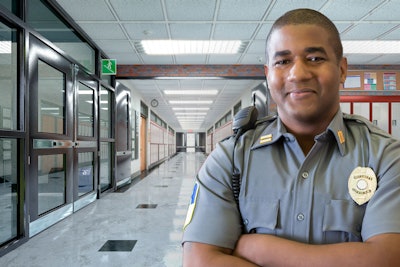 Traka Americas
Traka Americas
School districts across America are being forced to rethink their approach to campus security, access control, and emergency response protocols for active shooter scenarios. Keeping school facilities protected effectively goes well beyond the planning and actions of administrators and school resource officers – it takes a coordinated effort with local authorities, school staff, parents, and students alike.
Extending the reach of access control
While most schools have good control and visibility over movement through facility entrance points, it's the hundreds of other doors within the building that are often left unprotected. The keys to these openings may be in the hands of teachers, administrators, or janitorial staff with very little accountability, and virtually no visibility over when those keys are used. And manually signing out those keys each day from a central office quickly exposes how inefficient and impractical that process can be, especially when better options are available.
The answer to this age-old dilemma lies in technology, connecting the physical key with the modern systems we already use to manage and monitor building access. By implementing electronic key cabinets, the facility card credentials used by school staff can be used to access keys to classrooms, offices, storage areas, and vehicles without the need for manual oversight.
Software permissions enable administrators to determine who can access each key, when it can be accessed, and for how long. Through simple integrations, these permissions and user data are synchronized with existing access control or HR software, while creating immediate and centralized visibility over important system activity.
Meeting the needs of first responders
Beyond managing keys for day-to-day operations, school districts also need to consider how to manage the access needs of local authorities in emergency situations. Putting a school in lock down can be a vital measure in protecting people, but it can also hinder response times in situations where every second counts.
While a Knox Box approach can meet critical access needs, it requires the distribution of numerous physical keys for responders that may require access and offers no ability to control or monitor access remotely. It's no surprise that many school administrators are looking at how to configure electronic key systems to meet emergency access needs, without compromise to campus security.
By deploying smaller key cabinets at critical access points throughout the building, authorities can access the keys they need in seconds, in the places they're needed. Since the cabinets are networked and centrally managed, administrators gain immediate visibility of which keys are removed and who took them. Inversely, administrators can change access permissions on the fly, or even completely revoke cabinet access should a scenario require it.
This decentralized approach can also improve overall security, by reducing the number of physical keys exposed within the community. By distributing card credentials to local police, fire and medical responders, access can be electronically controlled and monitored, with the ability to disable a misplaced or stolen credential with just a few clicks in the administration software.
Facilitating an armed response
Numerous states are discussing the reality of having firearms accessible within their schools, acting as a deterrent to those seeking an easy target, and as an effective tool to neutralize any real threat as quickly as possible. Many colleges and universities have set the precedent in finding a comfortable and safe balance in implementing a small armory for campus police access, and it is again technology that helps safeguard the management process.
Smart locker solutions place strict controls over item access, with unique biometric credentials ensuring that only authorized officers can check out a weapon. Each firearm is discreetly tagged with RFID for per-item tracking, with reason logging features helping administrators monitor user access while documenting cleaning, maintenance, and repair activities for each weapon. With the locker's management software seamlessly integrated with the campus access control platform, these sensitive assets also gain top-level visibility alongside other critical systems.
Addressing the latest challenges in keeping schools safe doesn't require a transformation in how they operate, but simply to build upon the proven technologies they already use. Electronic access control creates a more secure facility, with better visibility and operational efficiency. And with solutions available to extend that infrastructure to physical keys, vehicles, shared devices, weapons, and equipment, school districts can easily adjust to meet evolving security and access needs.